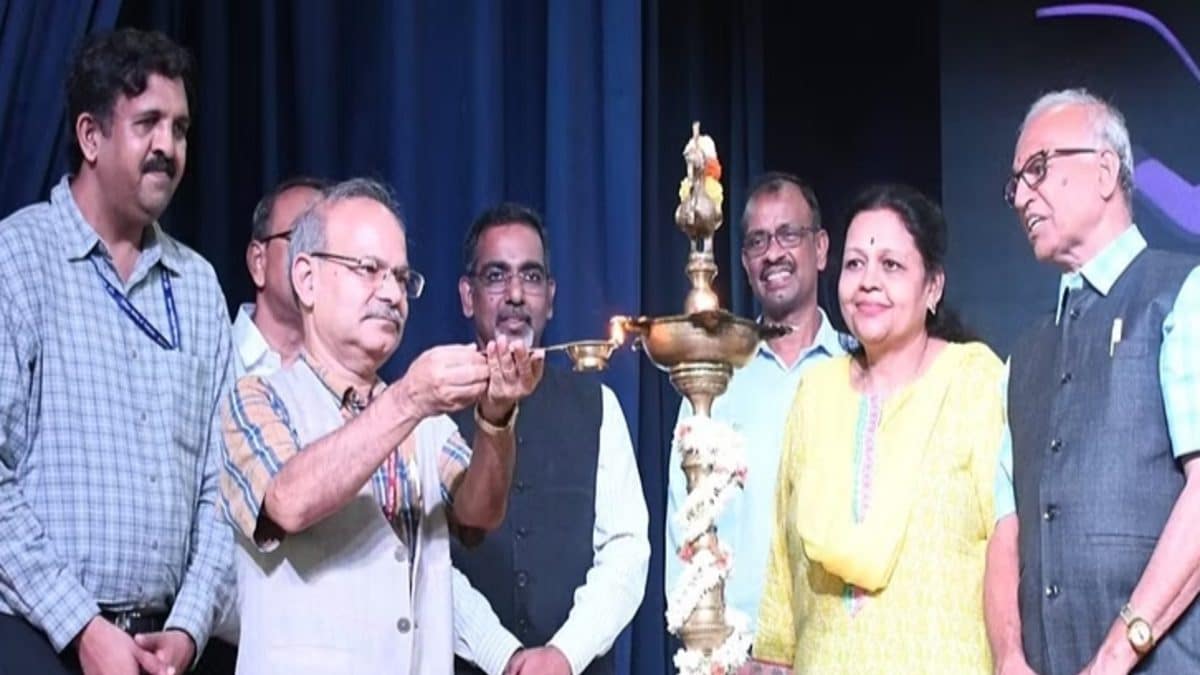As people across the globe prepare to celebrate International Day of Yoga, ISRO and CCRNY decided to take it into the next orbit – quite literally.
On Tuesday, June 18, Ayush body CCRNY (Central Council for Research in Yoga and Naturopathy) organised a conference on ‘Yoga for Space’ at S-VYASA University campus, Bengaluru, in collaboration with SVYASA Yoga University, Bengaluru, the Institute of Aerospace Medicine, Bengaluru, IIT Delhi, and Human Space Flight Centre ISRO, Bengaluru, and NIMHANS.
“We see many things happening related to yoga around the globe. This year, we said – why not go into space?” said Dr Raghavendra Rao M, director, CCRNY.
Dr C Geethakrishnan, deputy director, Human Space Flight Centre, ISRO, said that yoga can play a crucial role in crew safety measures and must necessarily have a role in astronaut training. Not just the number and durations of space missions have increased over the years, but importantly, India’s activity has been steadily increasing in this area, he shared. “Earth is the cradle of humanity, but one cannot remain in the cradle forever,” he quoted, to drive home the point that space exploration had become a necessity. “Just as sending people to orbit in Gaganyaan was important, equally crucial is bringing them back safely,” he said.
SURVIVING PHYSIOLOGICAL CHALLENGES
The gathering of scientists discussed the need for devising a yoga protocol that could help astronauts endure the severe conditions necessarily involved in space missions. They pointed out that all body systems were affected due to:
- Cosmic radiation – which can lead to increased DNA damage posing a risk of cancers and other health issues.
- Effects of microgravity – leads to muscle atrophy, bone loss, fluid imbalance, altered immune response.
- Psychological Stress – owing to limited resources, loneliness, depression.
- Space Adaptation Syndrome – including motion sickness, disorientation, nausea.
- Altered Circadian Rhythm – that is, issues with the sleep-wake cycle.
- Limited Access to Healthcare – and thus, need for self-care.
Prof Biswajit Sinha of the Institute of Aerospace Medicine explained how no system of the body from the head to toe is spared the effects: “Body’s response to space flight includes variation in multiple systems and factors, notably in – fluid shifts, cardiovascular, respiratory, muscle, bone, neuro-vestibular, sleep and circadian rhythm, haematological, psychological, taste and odour, gastrointestinal, nutrition, behaviour, radiation, and immunology.”
Dr KK Deepak, eminent physiologist and professor at the Centre for Biomedical Engineering (IIT-D), said, “Those who do yoga training can better tolerate the changes that occur in space.” Terming the period after return from space as a “very unhappy state”, the physiologist explained that astronauts are unable to stand because of the muscle loss, the effects on soleus muscles and gastrocnemius, besides other subtle changes in the body. He suggested a yoga protocol.
Since yoga cannot be attempted in space without support, he talked about an invention of his – ‘Pro-gravity body gear’ (patent pending) – in the AIIMS Space Physiology Lab. The gear, loaded from head to toe and fastened in the shoes, is used for earth-based experiments on microgravity. The professor said he had conducted several self-experiments using it.
Here’s the suggested yoga protocol for astronauts:
ADAPTING TO SPACE WITH YOGA
Dr Raghuram NV, chairman of Yoga Bharati, USA, said that adapting to the environs in space was difficult on account of three factors – microgravity, claustrophobia, and loneliness. “You are hanging between life and death all alone, enclosed in a small space. Psychological makeup is a crucial factor – especially because the study can begin only once the astronauts have adapted. Yoga can quicken this adaptation process,” he explained.
Yoga experts explained the importance of yoga in space missions drawing from other experiences.
Dr BR Ramakrishna, pro-chancellor, SVYASA University, said, “There is less Prana-shakti when in space. But yoga knows the secrets to survival.” He gave examples of people living underwater and in glass chambers for extended hours, by working on their breathing. He said that by integrating yoga, Indian astronauts could be well prepared for space.
Dr Apar Saoji, principal (BNYS), SVYASA University, said, “From the available evidence, we can infer that yoga for space explorers can help broadly in minimising effect of cosmic radiations, bettering physical and mental health, enhanced cognitive abilities, autonomic balance, and self-care and health preservation.”
Citing instances of yoga helping at the Earth’s poles, in submarines, etc, Kashinath Samagandi, director, Morarji Desai National Institute of Yoga, said that yoga has the capacity to get people acclimatised to different extreme conditions. “Not just Asana and Pranayama, but lifestyle aspects – ahara and vihara in Ayurveda, relating to food, sleep, rest and recreation – have to be adjusted to a different ‘Loka’ (plane), for physical and emotional wellbeing of astronauts,” he added.
As a special initiative, ISRO is organising ‘Yoga for Space’ on International Day of Yoga 2024, where all scientists and officials will perform yoga together as per the Common Yoga Protocol. The team from the ‘Gaganyaan’ project will also join the global campaign by practising yoga on the occasion.





